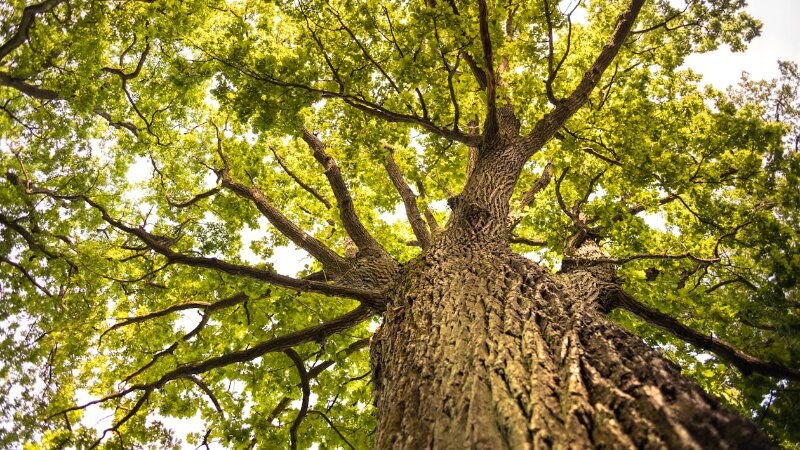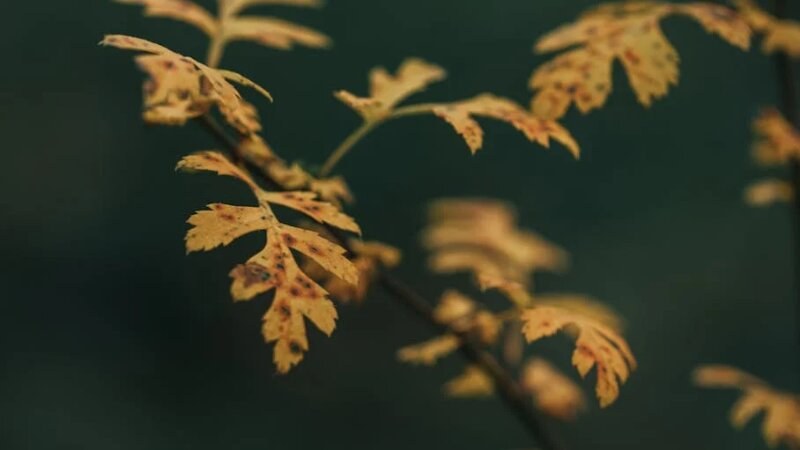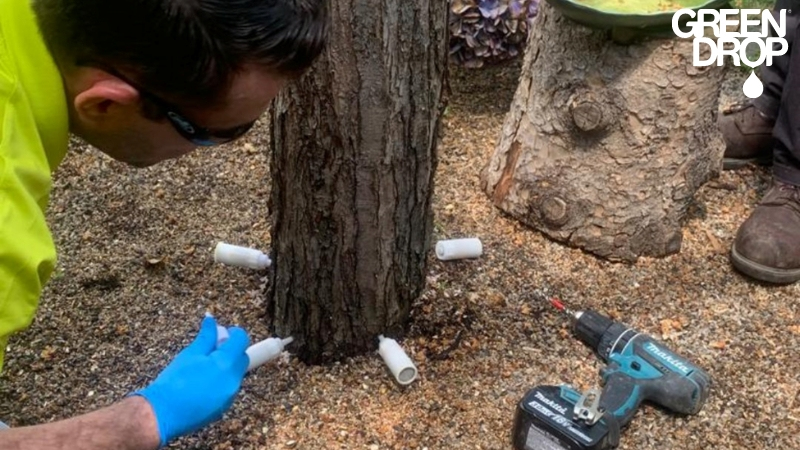Unveiling the Oak Decline: Exploring Factors Impacting Winnipeg's Iconic Trees
Reading time: 6 minutesFew things are more majestic and breathtaking than the natural beauty of a towering oak tree. But if your beautiful bur oak trees have seen better days, you might be dealing with a case of oak decline.
Join us as we explore how oak decline forms, prevention strategies, and when to contact a professional like Green Drop for tree care services.

What Is Oak Decline?
Oak decline (not to be confused with oak wilt or sudden oak death) is a critical tree disease that specifically affects bur oaks and a few other tree species throughout Western Canada. It causes rapid and drastic leaf dieback and often requires complete tree removal.
In most cases, affected oak trees are more than 50 years old. Healthy trees typically aren’t at risk of oak decline, which is why proper tree care is so important both for the city of Winnipeg and its residents.

What Causes This Tree Disease?
According to the Canadian Forest Service, this condition is caused by a combination of factors. First, oak trees must be in a weakened state due to drought, compacted soil, and nearby construction. This allows two-lined chestnut borers to infest the tree, feeding off of the bark and laying eggs in its crevices.
As the larvae of these beetles hatch, they bore into the tree's vulnerable vascular system. This eventually interrupts the flow of nutrients and water from the tree's trunk to its leaves. Once larvae reach the inside of the tree, death often occurs within a few weeks.
Because multiple aspects contribute to oak decline, treating and preventing the disease can be challenging for Winnipeg and its resident homeowners. It’s not any one thing that kills a tree with oak decline, but rather, small issues will stack on top of each other and overwhelm the tree to the point of no return.
Signs & Symptoms to Look For
There are several indicators that an oak tree is infested with borers, some of which vary based on the species of tree. The Invasive Species Centre says these include:
- Long splits in between bark plates
- "Bleeding" patches that seep fluid in the spring that stain the bark
- Foliage dieback that starts at the tops of your trees and moves downward
- Leaf discolouration that starts on the outside of the leaves and moves inward
- Large, dark-coloured spots underneath the bark that may smell sweet or fruity
- Dark rings can be seen when affected branches are cross-sectioned
- Leaves that fall prematurely
Is the Problem Getting Worse?
Winnipeg's gorgeous bur oaks are native to Western Canada. The city’s arborists say the trees have sadly been in decline for 20 years or more. In fact, the city is the only one in the area with such a large number of indigenous bur oak trees. Recently, though, oak decline has become a bigger problem than ever, and some of the city's oldest trees are at risk.
In 2021, Trees Winnipeg president Gerry Engel highlighted a 200-year-old massive towering oak for CTV News that was becoming weaker by the day. “These trees were here when the communities were built,” he said. “We’ve changed their environment entirely. Overall, in the last several years, we’ve noticed a huge increase in the decline of the health of our oak trees.”
Winnipeg forester Martha Barwinsky also stated, "What we’ve been seeing more recently is, what we believe to be, all of a sudden, the oak is dying. Oak, in general, is very susceptible to any changes in land drainage, any changes to soil conditions in its immediate surroundings."
Because of this, the University of Manitoba estimates that urbanization has played one of the most significant roles in the occurrence of oak decline in the region and that the condition has likely been developing for decades or more.

How Winnipeg Homeowners Can Protect Their Tree Health
There’s a saying that “an ounce of prevention is worth a pound of cure,” and when it comes to your landscaping, this couldn’t be more true. Keeping a healthy tree in good condition is much easier than treating problems after they arise.
Trees Winnipeg, a non-profit charity that was formed to help protect the city's beautiful trees, gives tips on how to prevent oak decline from happening to you:
- Water trees once every week or two to keep soil around the tree moist
- Place a thin layer of organic mulch around the trunk out to the drip line to hold water and nutrients
- Ensure proper drainage away from tree roots to prevent waterlogging
- Aerate soil regularly and divert foot traffic away from the tree to prevent soil compaction
- Use organic tree fertilizer once or twice a year to promote healthy root growth
- Burn or bury dead oak tree material, including leaves, branches, and bark, to prevent insects from nesting
- Limiting or avoiding chemical pesticide use, especially during the summer and winter
Winnipeg's Public Works Department recommends using a high-phosphorus, deep-root fertilizer during or right after periods of drought. They also caution that oak firewood control is one of the most important mitigation methods since infested pieces of wood can harbour larvae that emerge as borers in the spring.
They list a few different options to treat or dispose of affected lumber, such as:
- Debarking firewood in late summer or early fall
- Burying affected wood at approved sanitary landfills
- Keeping oak wood piles completely covered at home from May through July
- Chipping small logs and branches that are impractical to bury

When to Call Our Qualified ISA-Certified Arborists
If you suspect one or more of your trees could have oak decline, it’s important that you act fast and reach out to the qualified tree specialists at Green Drop. Our team of ISA-certified arborists provides complete tree health care services in Winnipeg and surrounding areas throughout Western Canada, including Calgary, Edmonton, Red Deer, Regina, and Saskatoon.
Book your service or get an estimate.
Frequently Asked Questions (FAQs) About Oak Decline in Winnipeg
What happens if a tree dies from oak decline?
When any kind of tree dies, it results in the loss of animal habitat and affects the appearance of the surrounding landscape. When large numbers of trees die, camping and other recreational areas may also be lost. Trees that fall across roads or trails can create safety risks and make way for less desirable tree species to flourish.
Can oak trees recover from decline?
Unfortunately, there’s no “cure” for the condition. Most oaks in decline eventually die because it’s so hard to figure out which issues are the problem and fix all of them before the tree is too far gone.
How do I know if my oaks are vulnerable to decline?
Most Winnipeg oaks are at risk of decline. However, trees on your property may be even more susceptible if they experience drought, pest infestation, soil compaction, frost injury, and other influencing factors. Healthy oak trees that are well taken care of are less vulnerable to these common, disease-inducing elements.

